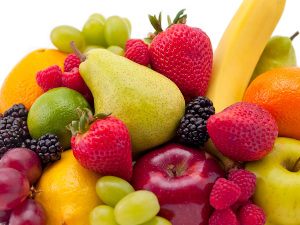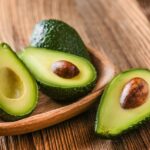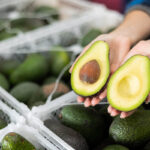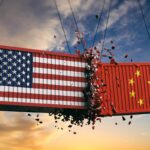Kran Nanobubble: Development of nanobubbles to combat water scarcity

The water scarcity experienced by many countries in the world has created new challenges for companies seeking to optimize the efficiency of their water resources.
The Food and Agriculture Organization of the United Nations (FAO) indicated that currently, 3.6 billion people around the world live in areas that suffer from water shortages at least one month per year.
This figure is expected to reach between 4.8 and 5.7 billion people by 2050, causing water stress among users and across borders.
According to UN data, 76 percent of land at the national level is affected by the desertification process.
In the fruit and vegetable industry, water is a vital resource to ensure reliable production. In this situation, nanobubbles are used as one of the main solutions to combat water scarcity.
Nanobubbles are developed by the Chilean company Kran, founded in 2017, which was created with the purpose of returning to nature what we have taken from it, solely with the use of 100% sustainable technology. This is the starting point that gave rise to everything that is the company today.
Kran is a technology company dedicated to creating solutions aimed at the rehabilitation of contaminated environments, wastewater treatment, disinfection, sanitization, food purification, oxygenation and the effects of extensive contributions to the agricultural sector, among other applications, through the use of Ultrafine Bubbles (BUF), also known as Nanobubbles (NB).
"We have managed to position ourselves as a benchmark in the study and application of nanobubbles, developing the first line of nanobubble generators in South America, with applications in Chile, Peru, Brazil, Honduras, Guatemala and Spain", explained Javiera Emaldía, Agricultural Deputy Manager in Kran.
"The properties of the nanobubbles improve soil and root condition so that the entire system becomes more efficient. The plants are in better conditions and that translates into better production conditions such as sizes, color, useful life, yield and productivity among other improvements. This is the starting point in the chain of subsequent improvements from a more efficient use of water and at the same time from an increase in plant health," she emphasized.
Pillars and applications of nanobubbles in the industry
One of the pillars of the company is research and development (R&D). When working with new technology, it is essential to constantly continue and encourage research. This is why Kran has alliances not only with the largest nanobubble association in the world as one of the eight non-Japanese companies that make it up: The Fine Bubbles Industries Association (FBIA) but also has alliances and studies with laboratories and local universities such as the Universidades de los Andes, Universidad Católica del Norte and Universidad Católica de Valparaíso, among others.
Javiera Emaldía pointed out that “each case is taken as unique, studied by a team that includes engineers, agronomists, hydraulics, chemists, technicians, mechanics and experts in the matter to be treated, for example, an agronomist with scientific and technical training in agriculture."
"Everything is analyzed globally, including all points of view, since we understand that no one person can take charge of all challenges alone as there is always another perspective to look at the situation from," she added.
Regarding the application of nanobubbles, the firm seeks to incorporate Kran nanobubbles into the processes of agriculture, aquaculture, water treatment and mining as a tool that solves the problems of efficiency and environmental impact, aligning economic growth with sustainable development.
"It is essential to work hand in hand with the industry for sustainable growth," said Javiera.
In the case of methodology, any project or service begins with listening to the client or interested party, who often know that they have an opportunity to improve a process, but are not always aware of how to achieve it.
Subsequently, the company makes a field visit to collect data and learn about the reality they are facing, "this is where the multidisciplinary work that designs and proposes an optimal solution for the client's problems comes in," Javiera explained.
"Understanding that the generation of nanobubbles comes from flowing water - the gas to be converted into nanobubbles is injected into an aqueous medium - the optimal way to intervene in the system depends on different variables such as volume of water, flow, time, temperature and pH, among other things; which ends with a proposal that guarantees operation, periodic maintenance and specialized advice until the expected result is obtained (increase in dissolved oxygen, recovery of the seabed, sanitization of fruits, reduction of coagulant and flocculant in IRR treatments, etc.)," she said.
Development of new applications and product lines
The company will be part of the Agricultural Water Summit 2021, an event that will address key issues regarding the impact of water scarcity in the different regions of Chile, as well as the importance of applying new technologies and optimizing current irrigation systems for management and the efficient use of water.
The company is made up of an interdisciplinary team with scientific backgrounds that develop innovative solutions to problems of various kinds, positioning Kran as a pioneer and leader in the use of nanobubbles both nationally and globally.
















































